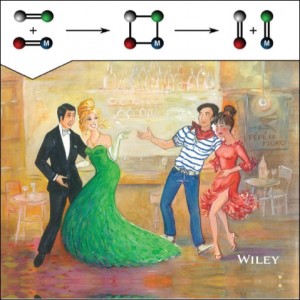
Making Olefin Metathesis Work: Current Advances and Retreats
Ruthenium-catalyzed olefin metathesis reactions represent an attractive and powerful transformation for the formation of new carbon-carbon double bonds. This area is now quite familiar to most chemists as numerous catalysts are available that enable a plethora of olefin metathesis reactions.1 However, formation of substituted and crowded double bonds, decreasing the amount of metal, using metathesis in medicinal chemistry, etc. still remain a challenge, making industrial applications of this methodology difficult. These limitations can be solved by designing new, more active and stable catalysts and catalysts that can be easier removed / recycled.
Other events

Let's create a brighter future
Join our team to work with renowned researchers, tackle groundbreaking
projects and contribute to meaningful scientific advancements
 20/12/2017
20/12/2017
 12:00
12:00




















